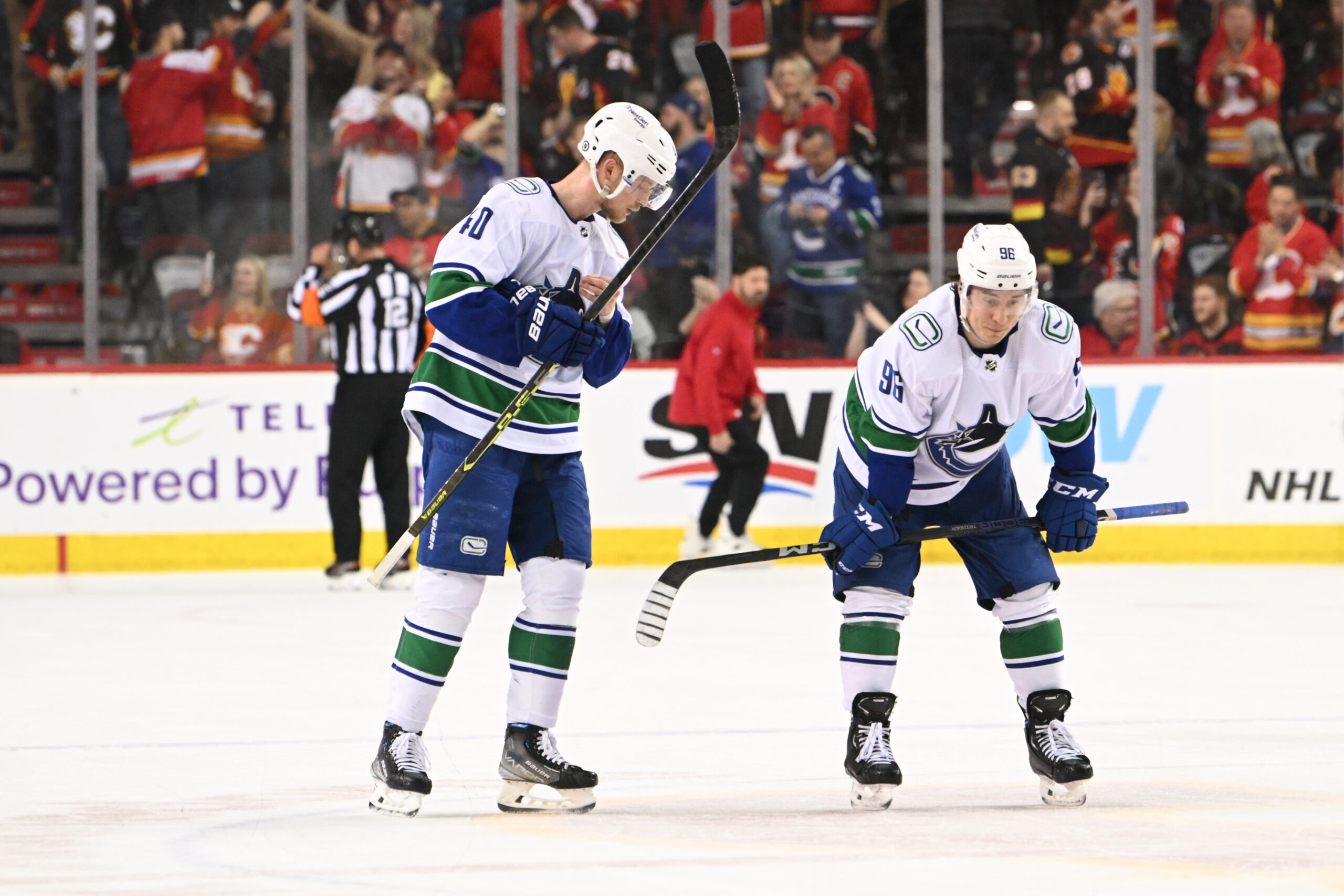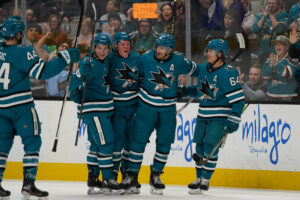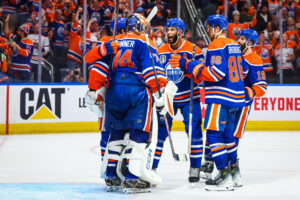When you say “Vancouver Canucks” patience is rarely the first thing that springs to mind. It should be, though, given it has been the problem – and will be the cure – of so many of their issues.
Canucks Patience Strained – and Resold
For fans of the Canucks, “patience” is usually described as “what we’ve run out of!” That’s because the word has been used and misused in far too many press conferences and press reports coming from the team.
Under New Ownership
Don’t get us wrong! Patience is a staple of every team and their public relations departments, so it’s hardly unique to Vancouver. The problem is when the owner of the team extends that patience beyond all reason.
Indeed, the distinct lack of patience is what kicked off much of the decade’s flailing approach to the game. John McCaw’s new ownership back in 1998 was primarily aimed at restoring profitability. But along the way, new general manager Brian Burke changed the direction of the club.
Burke needed to move out superstar Pavel Bure, drafted Daniel and Henrik Sedin, and put the finishing touches on the West Coast Express. He moved the team from struggling on and off the ice to a powerhouse in both. He couldn’t quite find the missing pieces for playoff success, though, and was eventually replaced.
In 2004, the Canucks were sold to a corporate conglomerate including the Aquilini family, and they went with a rookie GM. Dave Nonis’ limited tenure saw another huge deal made, adding Roberto Luongo to the Canucks.
But he, too, produced hit-or-miss results in the standings. Nonis had apprenticed under Burke before the promotion, and that may have hastened the decision. At this point, it was clear the Canucks patience was very limited.
Through various financial and legal maneuverings that we won’t get into here, Francesco Aquilini gained sole control of the Canucks in 2007. He sent Nonis packing and decided to try another new face – this time former agent Mike Gillis.
Patience is for Losers!
Mike Gillis was brought in with one goal in mind: win the Stanley Cup. And he came as close as any Canucks team has – certainly since 1994. And as a former agent, he was very good at negotiating with players. The brief time Mats Sundin had in Vancouver was his doing, for instance.
Gillis made two hugely important trades in the Canucks recent history. Bringing in Christian Ehrhoff from a cap-strapped San Jose Sharks club got Vancouver to the 2011 Final, for one. The other was resolving the chaotic goaltending situation by moving Cory Schneider for the pick that became Bo Horvat.
But mostly, Gillis made his name with signings. He negotiated Roberto Luongo‘s new deal in 2009, the same year he re-signed the Sedins and Alexandre Burrows to very favourable deals. The team came to the brink of winning the Stanley Cup in 2011, but despite excellent records in the regular season lost their next two playoff rounds 1-4 and 0-4.
Coach Alain Vigneault was fired and John Tortorella replaced him, at the rumoured insistence of owner Francesco Aquilini. And here is where the hand of ownership really became noticeable, even to casual fans.
General Manager, Sort Of
The Tortorella experiment was a disaster pretty much immediately. To be fair to him, though, Gillis had finally managed to trade Luongo, leaving the team with no veteran goaltending. Eddie Läck, delightful as he is, was a rookie, and Jacob Markström played all of 43 NHL games by then.
The Canucks missed the playoffs entirely, and the Aquilinis wanted their hit. Gillis was out, Tortorella was out, Trevor Linden moved in. Linden, by many accounts, was the one who suggested yet another rookie general manager in Jim Benning.
By this time there was already some muttering among fans about trying for a rebuild. At the same time the Canucks patience had run out, their fans started encouraging it.
Instead, the new group was directed along the same lines as the previous general manager: get the team to the playoffs. The rookie general manager hired a rookie head coach in Willie Desjardins and the team got their Dead Cat Bounce the next year.
It was probably the worst thing that could have happened to them.
Short Cuts Cut Canucks Patience Short
Benning started to look for players who may have been overlooked in other systems. Ones that would bloom with greater opportunity, or had some hard luck early, but might be ready now, a couple of years later.
The results are a mixed bag. Some could even call the deals erratic or senseless. But people don’t do things that don’t make sense to them, so bearing in mind what his directive was – making the playoffs NOW – they have their logic.
Derek Dorsett was a success, while Linden Vey… not as much. Sven Baertschi‘s career was derailed by injuries. Bringing in Brandon Sutter to shelter their new draft pick, Bo Horvat. Not their fault he got injured for the season, it’s a defendable move.
Sure, these were a bit risky, but it was a quick way to get proven talent instead of waiting three or four seasons. And the Canucks were all about NOW! It might not be top-end talent, but maybe top-six with the opportunity to play!
The results, alas, didn’t follow. After that 101-point season, their record plummeted. Just 75 points the next year, and 69 the year after that. The swings started getting wilder.
Markus Granlund was followed by Erik Gudbranson by Derrick Pouliot, all moves that cost the Canucks future draft picks or current prospects or both. The instant that it looked like the team was gaining ground, a big move for Tyler Toffoli went through.
DOOOM
That post-playoff-bubble, post-COVID-19 shortened season is really the drawing line for Jim Benning‘s approach. A very important feature of moving the future for NOW! is being able to hold on to those players you got for NOW! Otherwise, all you did was move the future.
The already-short Canucks patience was, miraculously, extended. The coaching staff and management had managed to squeak into the playoffs, so they could stay. But every free agent that helped the team get there had to go.
The results were distressingly obvious, with Vancouver finishing as the worst team in Canada. Afterwards, Madison Bowey joined the club for two draft picks. Jason Dickinson for another.
Then, infamously, came the Conor Garland and Oliver Ekman-Larsson deal. Three draft picks left the team that day, the last of which was paid this year.
It happened because ownership decided they simply couldn’t wait another year for contracts to expire naturally. The buyout was, perhaps, inevitable. But Benning wouldn’t be around to execute it.
Lessons Learned?
This doesn’t mean that finding shortcuts is entirely wrong. It’s the premise of signing NCAA players, for instance. While those players rarely end up being stars, it costs nothing but money and a contract slot. And, of course, some of the Canucks patience.
But it’s difficult to say that the Canucks management – or ownership – is suddenly taking a new tack. Correcting past mistakes – Dickinson, specifically – has cost Vancouver some future pieces. Being unable to sign Horvat forced an uncomfortably familiar deal, moving a pick for a player who hasn’t quite lived up to expectations yet.
Overall, this group’s trade deals have been decent. This offseason has included plenty of low-risk, modest contracts being signed to rebuild the defence and bottom-six forward corps. On paper, the Vancouver Canucks are better now than they were two years ago.
But for proof, we’re going to need to be patient.
Main Photo Credit: Candice Ward-USA TODAY Sports






